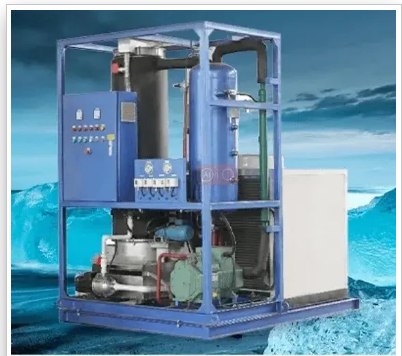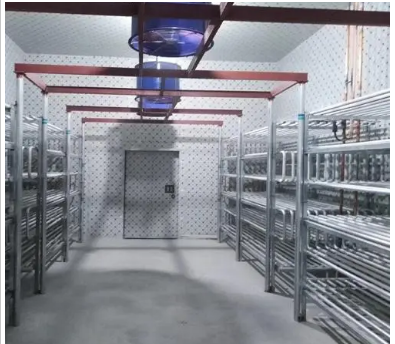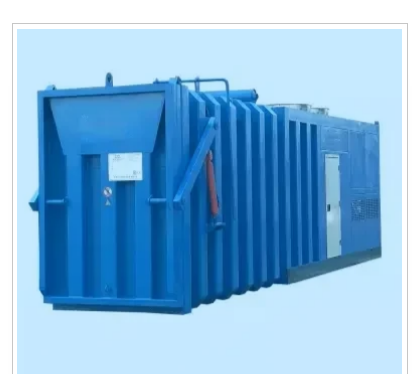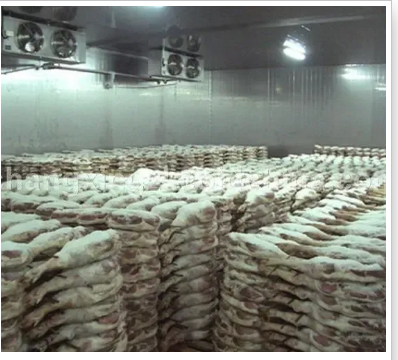Monoblock Condensing Unit: Compact, Easy Install & Efficient
The Evolution of Integrated Refrigeration: Understanding the monoblock condensing unit
In the dynamic landscape of industrial and commercial refrigeration, efficiency, reliability, and ease of installation are paramount. Traditional split refrigeration systems, while effective, often require extensive on-site installation, including complex piping and refrigerant charging. This is where the monoblock condensing unit emerges as a transformative solution, offering a compact, pre-assembled, and highly efficient alternative. Designed for a diverse range of cold room and climate control applications, these self-contained units integrate the compressor, condenser, and control panel into a single, robust housing. Their streamlined design not only simplifies logistics and installation but also significantly reduces the potential for refrigerant leaks and operational downtime.
The global demand for reliable cold chain solutions continues to escalate, driven by growth in sectors such as food processing, pharmaceuticals, and logistics. This upward trend positions the monoblock condensing unit at the forefront of modern refrigeration technology, celebrated for its plug-and-play functionality and consistent performance. This comprehensive guide delves into the intricate details of these units, from their manufacturing prowess and technical specifications to their broad application spectrum, strategic advantages, and the crucial factors that define their market leadership. We will explore the latest industry trends, scrutinize key parameters, and provide insights into selecting and customizing these vital components for optimal operational success.
Precision Engineering: The Manufacturing Process of a Monoblock Condensing Unit
The reliability and performance of a monoblock condensing unit are a direct result of meticulous engineering and advanced manufacturing processes. The fabrication journey adheres to stringent international standards such as ISO 9001 for quality management and ANSI standards for various component specifications, ensuring consistency and superior operational lifespan. Typically, these units are designed for a service life exceeding 15 years, even in demanding industrial environments.
1. Material Selection and Fabrication:
The foundation of a durable unit begins with the selection of high-grade materials. External casings are often constructed from pre-painted galvanized steel (PPGI) or stainless steel (SS304/SS316), chosen for their exceptional corrosion resistance, especially crucial in humid or saline environments. Internal components, such as evaporator and condenser coils, typically utilize copper tubing with aluminum fins, selected for their superior thermal conductivity and longevity. For structural integrity, frame components might involve precision-cut, high-strength steel sheets.
2. Component Manufacturing and Assembly:
- Compressor Integration: At the heart of the unit, the compressor (hermetic, semi-hermetic, or scroll type) is carefully mounted onto a vibration-dampening base. Reputable brands like Copeland, Bitzer, and Danfoss are often specified for their proven efficiency and reliability.
- Coil Production: Evaporator and condenser coils are manufactured using advanced fin-and-tube heat exchanger technology. This involves precision expansion of copper tubes into aluminum fins to ensure maximum surface contact for optimal heat transfer. Automated bending and brazing processes are employed to create leak-free connections.
- Casing and Frame Assembly: CNC (Computer Numerical Control) machining plays a pivotal role in cutting and forming the sheet metal components for the unit's casing and frame. This ensures dimensional accuracy and perfect fit-up during assembly. Robotic welding may be used for consistent, high-strength joints.
- Electrical and Control Integration: All electrical components, including the control panel, wiring, sensors, and protective devices, are meticulously assembled. Wiring harnesses are pre-fabricated and tested to ensure compliance with electrical safety standards (e.g., CE, UL).
3. Brazing and Leak Testing:
After the mechanical assembly, all refrigerant line connections are expertly brazed, typically using high-temperature silver brazing alloys. This critical step ensures leak-proof integrity of the refrigeration circuit. Post-brazing, each unit undergoes a rigorous multi-stage leak detection process, including nitrogen pressure testing (up to 300 psi or more) and electronic leak detection, to identify even minute refrigerant escapes. This meticulous testing guarantees system longevity and environmental responsibility by preventing refrigerant loss.
4. Vacuum Evacuation and Refrigerant Charging:
Once leak integrity is confirmed, the system is deeply evacuated to remove all non-condensable gases and moisture. This vacuum process is crucial for preventing system contamination and optimizing performance. Subsequently, the precise amount of refrigerant (e.g., R404A, R134a, R290, R448A, R449A) is charged into the unit, strictly adhering to manufacturer specifications and environmental regulations.
5. Performance Testing and Quality Control:
Before final packaging, every monoblock condensing unit undergoes comprehensive functional and performance testing in a controlled environment. This includes:
- Run Test: Operation under various simulated load conditions to verify stable temperatures and pressure levels.
- Electrical Safety Test: Verification of insulation resistance, grounding, and operational current.
- Noise Level Measurement: Ensuring compliance with specified acoustic levels for quiet operation, typically below 70 dB(A) for most commercial units.
- Energy Efficiency Verification: Measurement of Coefficient of Performance (COP) or Energy Efficiency Ratio (EER) to confirm specified energy ratings.
- Visual Inspection: Final check for cosmetic defects, proper labeling, and adherence to assembly standards.
These rigorous testing protocols ensure that each unit delivers consistent, energy-efficient, and reliable performance upon installation. The emphasis on robust materials and precise manufacturing translates into significant advantages in typical applications, such as enhanced energy savings through optimized heat exchange and superior corrosion resistance, ensuring longevity in diverse industrial settings like petrochemical plants, metallurgical facilities, and critical water treatment infrastructure.

Figure 1: Internal components and sophisticated control system of a monoblock condensing unit.
Key Technical Parameters and Performance Metrics of Monoblock Condensing Units
Understanding the technical specifications of a monoblock condensing unit is crucial for proper selection and optimized performance. These parameters dictate the unit's suitability for specific applications, energy consumption, and overall operational efficiency. Below is a comprehensive table outlining typical parameters you might encounter, along with explanations of their significance.
Typical Specifications Table for Monoblock Condensing Units
Beyond these core parameters, advanced monoblock condensing units may also feature integrated electronic expansion valves (EEV) for precise refrigerant flow control, variable speed compressors (inverter technology) for enhanced energy savings under partial load conditions, and advanced monitoring systems compatible with Building Management Systems (BMS) for remote control and diagnostics. These features further contribute to the unit's overall efficiency, reliability, and adaptability to fluctuating demands.
Diverse Applications and Real-World Scenarios for Monoblock Condensing Units
The versatility of the monoblock condensing unit makes it an ideal refrigeration solution across an extensive array of industries. Its compact, all-in-one design is particularly advantageous where space is at a premium, or where rapid deployment and minimal on-site work are critical. Here are some primary application scenarios:
1. Food Processing and Storage:
- Meat and Poultry Cold Rooms: Maintaining precise low temperatures (typically 0°C to 4°C for chillers, -18°C to -25°C for freezers) is crucial for preventing spoilage and bacterial growth. Monoblock units provide reliable, consistent cooling, even in high-humidity environments.
- Dairy and Beverage Industries: Ensuring the freshness and shelf life of milk, cheese, and fermented products requires stable temperature control. The units facilitate rapid pulldown and precise temperature maintenance for storage and processing areas.
- Fruits and Vegetables Storage: Different produce types require specific temperature and humidity levels for optimal preservation. Monoblock units with specialized controls can manage these conditions effectively, extending the freshness of perishable goods.
- Bakeries and Confectioneries: Used for ingredient storage (e.g., butter, dough) and finished product preservation, ensuring product quality and safety.
2. Pharmaceutical and Medical Sector:
- Drug and Vaccine Storage: Many critical pharmaceuticals require stringent temperature control (e.g., 2°C to 8°C for general cold storage, or ultra-low temperatures for specific vaccines). Monoblock units offer the precision and reliability needed to comply with regulatory standards like GDP (Good Distribution Practice).
- Laboratory Refrigeration: Used in research facilities and hospitals for storing sensitive reagents, samples, and biological materials.
3. Hospitality and Retail:
- Restaurant and Hotel Kitchens: Ideal for walk-in chillers and freezers, providing efficient and space-saving solutions for food storage.
- Supermarkets and Convenience Stores: Critical for maintaining cold chain integrity for fresh produce, dairy, frozen foods, and beverages.
4. Chemical and Petrochemical Industries:
- Explosion-Proof Applications: In areas where flammable gases or dust are present, specialized explosion-proof monoblock condensing unit variants are used to store sensitive chemicals that require precise temperature control or to cool processes that generate heat. Their self-contained nature minimizes the risk of spark generation.
- Process Cooling: Maintaining optimal temperatures for chemical reactions, solvent storage, or sample preservation.
5. Logistics and Cold Chain Warehousing:
- Modular Cold Storage: Easily deployed in temporary or expanding warehousing facilities due to their quick installation.
- Distribution Centers: Used for large-scale temperature-controlled environments, ensuring product integrity during transit and storage.
6. Specialized Applications:
- Floral Preservation: Maintaining ideal temperature and humidity for flowers and plants, extending their freshness and marketability.
- Water Treatment Plants: While not direct cooling, these units can be adapted for controlling temperatures in auxiliary equipment rooms or storage of sensitive chemicals used in water treatment.
- Metallurgy: In some metallurgical processes, specialized cooling of components or samples might be required, where a compact, dedicated refrigeration unit is beneficial.
In each of these scenarios, the monoblock condensing unit offers distinct advantages, including rapid installation, reduced risk of refrigerant leaks compared to field-installed systems, and simplified maintenance. Their self-contained nature minimizes the footprint and often provides a lower total cost of ownership over their operational lifespan.
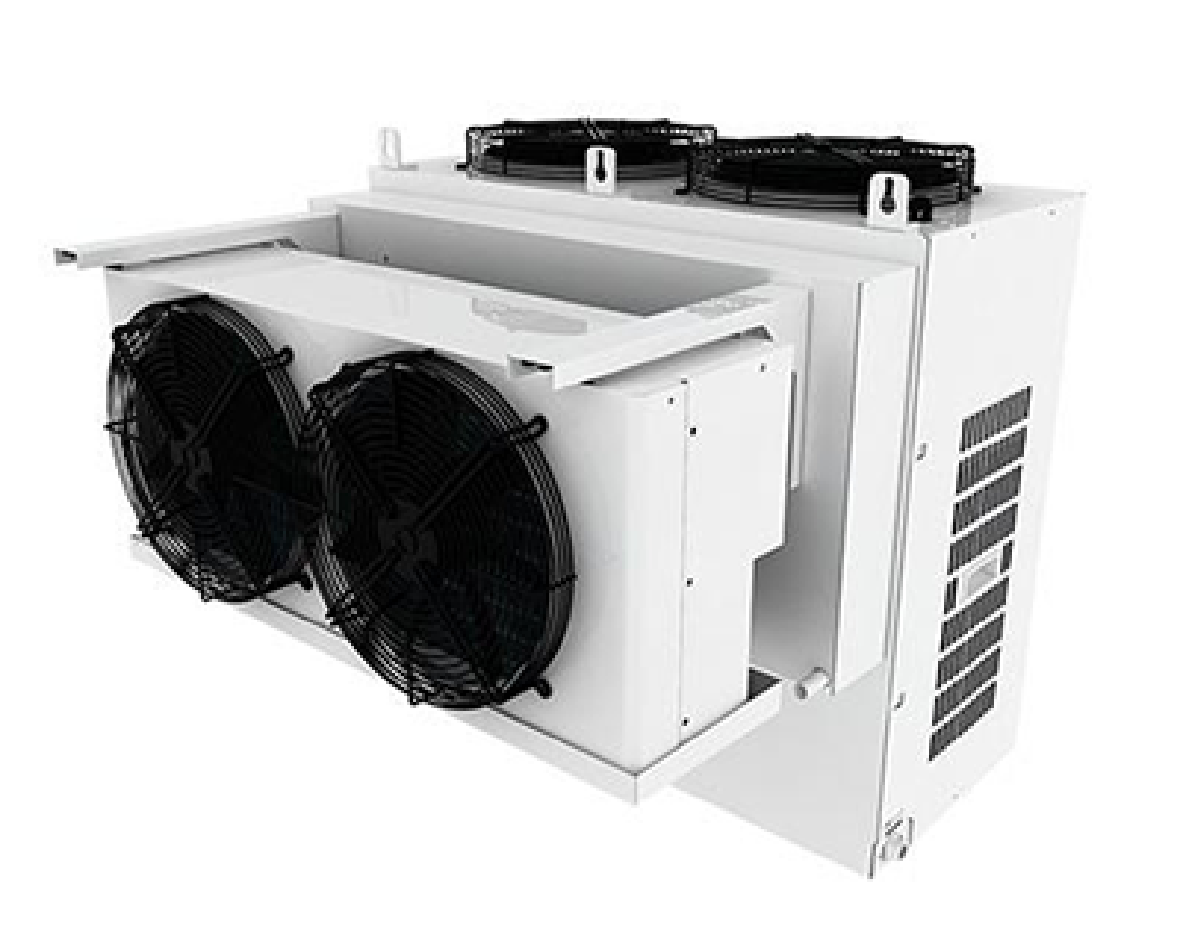
Figure 2: A monoblock condensing unit seamlessly integrated into a cold room structure.
Unpacking the Advantages: Technical Superiority and Competitive Edge
The rising prominence of the monoblock condensing unit is largely attributed to its compelling technical advantages over traditional refrigeration systems. These benefits translate directly into lower operational costs, enhanced reliability, and simplified logistics for businesses across various sectors.
1. Compactness and Space Efficiency:
By integrating all primary refrigeration components—compressor, condenser, evaporator, and control panel—into a single housing, monoblock units offer an exceptionally compact footprint. This is invaluable for facilities with limited space, allowing for optimal utilization of cold room interiors and exterior wall space. Unlike split systems that require separate indoor and outdoor units with connecting refrigerant lines, the monoblock condensing unit minimizes external infrastructure, making it ideal for urban environments or smaller commercial spaces.
2. Ease and Speed of Installation:
One of the most significant advantages is the "plug-and-play" nature of these units. Since they are factory-charged with refrigerant and pre-tested, on-site installation primarily involves mounting the unit into the cold room wall and connecting the power supply. This dramatically reduces installation time (often mere hours compared to days for split systems), labor costs, and the need for specialized refrigeration technicians, accelerating project timelines and minimizing operational disruption for businesses.
3. Enhanced Energy Efficiency:
Modern monoblock condensing unit designs incorporate advanced compressors (e.g., highly efficient scroll compressors, or variable speed inverter compressors) and optimized heat exchangers, leading to superior Coefficients of Performance (COP) and Energy Efficiency Ratios (EER). The absence of long refrigerant lines minimizes pressure drops and heat gains, further contributing to system efficiency. Many units also feature intelligent defrost cycles and precise electronic controls that adapt to real-time load conditions, reducing energy consumption and operational costs by up to 15-20% compared to older, less integrated systems.
4. Superior Reliability and Reduced Maintenance:
The factory-assembled and hermetically sealed nature of monoblock condensing units significantly reduces the risk of refrigerant leaks, a common issue with field-installed connections in split systems. Fewer potential leak points mean less refrigerant loss, environmental impact, and maintenance requirements. Furthermore, self-contained units simplify troubleshooting; if an issue arises, the entire unit can often be serviced or replaced more efficiently than diagnosing and repairing individual components across a distributed split system. Predictive maintenance features, such as remote monitoring and diagnostic capabilities, further enhance uptime.
5. Precise Temperature Control:
Integrated digital controllers and advanced sensors allow for highly accurate temperature management within the cold room. This precision is critical for sensitive applications in food preservation, pharmaceuticals, and chemical storage, where even minor temperature fluctuations can compromise product quality or safety. Pulse width modulation (PWM) valves and intelligent algorithms ensure stable temperature setpoints and rapid recovery after door openings.
Comparison: Monoblock vs. Traditional Split Units
These advantages underscore why the monoblock condensing unit has become the preferred choice for many cold room installations, offering a compelling blend of performance, cost-effectiveness, and operational simplicity.
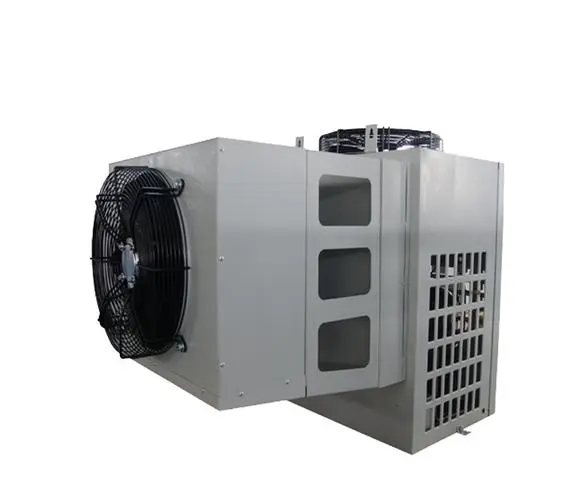
Figure 3: Advanced features and compact design of a modern monoblock condensing unit.
Manufacturer Comparison and Tailored Customization Solutions
Navigating the market for a monoblock condensing unit requires careful consideration of manufacturer reputation, product quality, and the ability to provide customized solutions. While specific brands offer varying strengths, the best choice often aligns with a vendor's capacity to meet unique project requirements and provide robust after-sales support.
Factors for Manufacturer Evaluation:
- Certifications and Compliance: Look for manufacturers with internationally recognized certifications such as ISO 9001 (Quality Management), CE marking (European conformity), UL (Underwriters Laboratories, for North America), and RoHS (Restriction of Hazardous Substances). These indicate adherence to rigorous quality and safety standards.
- Component Quality: Assess the quality of internal components, particularly the compressor (e.g., Copeland, Bitzer, Danfoss, Embraco), heat exchangers, and control systems (e.g., Dixell, Carel). Use of premium components directly correlates with unit longevity and efficiency.
- R&D and Innovation: Leading manufacturers continuously invest in research and development to offer more energy-efficient, environmentally friendly (e.g., natural refrigerants like R290), and digitally integrated units.
- Service Network and Support: A robust global or regional service network ensures prompt technical support, spare parts availability, and warranty fulfillment, minimizing potential downtime.
- Industry Experience and Track Record: Longevity in the market and a portfolio of successful installations in diverse industries speak volumes about a manufacturer's reliability and expertise.
Customization Solutions:
While standard monoblock condensing units suit many applications, complex or specialized cold room projects often necessitate tailored solutions. A proficient manufacturer should be able to offer the following customization options:
- Voltage and Frequency Adaptation: Units can be manufactured to comply with various international electrical standards (e.g., 220V/1Ph/50Hz, 380V/3Ph/50Hz, 460V/3Ph/60Hz) to ensure compatibility with local power grids.
- Refrigerant Choice: Beyond common HFCs like R404A, customization might include options for low-GWP refrigerants (e.g., R448A, R449A) or natural refrigerants (e.g., R290 - Propane) for enhanced environmental compliance and future-proofing.
- Casing Materials and Finishes: For corrosive or extreme environments (e.g., coastal areas, chemical plants), units can be customized with specific casing materials like full stainless steel (SS304/SS316) or enhanced anti-corrosion coatings.
- Specialized Defrost Systems: While electric defrost is standard, hot gas defrost can be integrated for greater energy efficiency, particularly in low-temperature applications where defrosting cycles are more frequent.
- Integrated Control Features: Customization extends to control logic, alarm systems, remote monitoring capabilities (e.g., BMS integration via Modbus or Ethernet), and specialized sensors (e.g., for humidity control, gas detection).
- Noise Reduction Measures: For installations in noise-sensitive areas, manufacturers can incorporate acoustic insulation, low-noise fans, or specialized compressor enclosures to minimize operational sound levels.
- Explosion-Proof (Ex-Proof) Design: For hazardous environments (e.g., petrochemical, certain chemical storage), units can be engineered with explosion-proof components and enclosures, certified to ATEX or IECEx standards.
By working closely with manufacturers who prioritize engineering excellence and customer-specific solutions, businesses can acquire a monoblock condensing unit that not only meets their immediate refrigeration needs but also provides long-term operational efficiency and compliance.
Ensuring Quality and Reliability: Certifications, Testing, and Long-Term Value
For B2B buyers and technical decision-makers, assurance of quality and reliability is paramount when investing in a monoblock condensing unit. This assurance comes from a combination of stringent manufacturing processes, adherence to international standards, rigorous testing, and robust post-sales commitments. A reputable manufacturer's dedication to these areas directly translates into a lower total cost of ownership and sustained operational performance.
Industry Certifications and Standards:
Compliance with global and regional certifications is a non-negotiable indicator of product quality and safety:
- ISO 9001: This certification signifies a robust Quality Management System (QMS), ensuring that processes are consistently applied to meet customer and regulatory requirements. It covers everything from design and development to production, installation, and servicing.
- CE Marking: Mandatory for products sold within the European Economic Area, CE marking indicates that the monoblock condensing unit complies with essential health, safety, and environmental protection requirements of relevant EU directives.
- RoHS Compliance: The Restriction of Hazardous Substances Directive restricts the use of specific hazardous materials in electrical and electronic products, promoting environmental sustainability and user safety.
- UL/ETL Listed: For the North American market, listings from Underwriters Laboratories (UL) or Intertek (ETL) confirm that the product has undergone rigorous testing and meets nationally recognized safety standards.
- ARI/AHRI Standards: While more common for larger HVAC&R systems, some manufacturers may test units against Air-Conditioning, Heating, and Refrigeration Institute (AHRI) standards, which provide a unified method for rating and certifying thermal comfort and refrigeration equipment performance.
- Good Distribution Practice (GDP) Compliance: Particularly relevant for pharmaceutical and food-grade units, indicating that the cold chain equipment supports the necessary conditions for product integrity throughout the supply chain.
Rigorous Testing Protocols:
Beyond design and manufacturing, extensive testing at various stages of production guarantees the operational integrity of each monoblock condensing unit:
- Leak Detection: As detailed in the manufacturing process, advanced leak detection methods (e.g., helium leak detection, high-pressure nitrogen testing) are critical to ensure a hermetically sealed refrigeration circuit. This directly impacts refrigerant containment and system efficiency over time.
- Performance Testing: Each unit is run through simulated operational cycles under varying ambient and load conditions in a dedicated test chamber. Key performance indicators such as cooling capacity, power consumption, temperature pull-down rates, and defrost efficacy are precisely measured and recorded. Data from these tests provides definitive proof of the unit's declared specifications and energy efficiency.
- Noise and Vibration Analysis: Acoustic chambers are used to measure operational noise levels, ensuring compliance with specified limits for sensitive environments. Vibration testing confirms structural integrity and minimizes component wear.
- Electrical Safety Testing: Comprehensive tests for insulation resistance, dielectric strength, continuity, and grounding are conducted to ensure electrical safety and compliance with international standards.
- Environmental Chamber Testing: Some units may undergo extreme temperature and humidity testing to simulate harsh operating environments, verifying performance and reliability under adverse conditions.
Long-Term Value and Operational Longevity:
The combination of quality materials, precise manufacturing, and rigorous testing contributes significantly to the extended service life of a monoblock condensing unit. For instance, condenser coils coated with hydrophilic or epoxy resins exhibit superior corrosion resistance, extending their lifespan in marine or chemical environments. Advanced electronic controls and robust compressors are designed for continuous operation, reducing the frequency of repairs and replacements.
By prioritizing units from manufacturers who openly share their certifications, test data, and commitment to quality, businesses can make informed decisions that safeguard their investments and ensure uninterrupted, efficient refrigeration for years to come. This proactive approach to procurement minimizes future operational headaches and maximizes return on investment.

Figure 4: A monoblock condensing unit undergoing final quality assurance checks before shipment.
Addressing Common Queries: FAQ, Delivery, and Customer Support
Transparency in product information, delivery processes, and post-sales support is crucial for building trust with B2B clients. This section addresses common questions and outlines the commitment to customer satisfaction for monoblock condensing unit procurement.
Frequently Asked Questions (FAQ):
-
Q1: What is the typical lifespan of a monoblock condensing unit?
A1: With proper installation and routine maintenance, a high-quality monoblock condensing unit can typically operate efficiently for 10 to 15 years, and often longer. Factors such as operating conditions (ambient temperature, humidity), adherence to maintenance schedules, and the quality of initial components play significant roles.
-
Q2: Are these units suitable for outdoor installation?
A2: Yes, most monoblock condensing units are designed for outdoor installation, typically through a wall-mounted aperture or on a rooftop. Their robust, weather-resistant casings (often galvanized steel with powder coating or stainless steel) protect internal components from environmental elements. For extreme conditions, specialized weatherproofing and anti-corrosion treatments are available.
-
Q3: How do I choose the correct capacity for my cold room?
A3: Sizing is critical. It involves calculating the cold room's heat load, which depends on factors like dimensions, insulation quality, desired temperature, ambient temperature, product load, air changes (door openings), and internal heat sources (lights, personnel). Professional cold room design services typically perform these calculations to recommend the precise cooling capacity (kW or BTU/hr) required. Over- or under-sizing can lead to inefficiency or inadequate cooling.
-
Q4: What maintenance is required for a monoblock condensing unit?
A4: Routine maintenance includes cleaning condenser coils to ensure efficient heat exchange (typically quarterly), checking refrigerant levels (annually), inspecting electrical connections for wear, and verifying proper drainage of condensate. Compressors are generally hermetically sealed and require minimal direct maintenance. Regular maintenance ensures optimal performance, energy efficiency, and extends the unit's lifespan.
-
Q5: Can these units be controlled remotely?
A5: Many modern monoblock condensing units come with integrated digital controllers that can be connected to Building Management Systems (BMS) via protocols like Modbus RTU/TCP or Ethernet. This allows for remote monitoring of temperature, alarms, operational status, and even remote adjustment of settings, providing greater control and operational visibility.
Delivery and Logistics:
Efficient delivery is a cornerstone of B2B operations. We streamline the process to ensure your monoblock condensing unit reaches its destination safely and on schedule:
- Lead Time: Standard units typically have a lead time of 2-4 weeks from order confirmation to dispatch, depending on inventory and production schedules. Customized units may require 4-8 weeks due to specialized manufacturing processes.
- Packaging: Units are securely packed in robust wooden crates or pallets, often with additional internal protective foam, to withstand transit rigors.
- Shipping Options: We offer flexible shipping solutions including sea freight (LCL/FCL) for international orders and road/rail transport for domestic deliveries, optimizing for cost and speed based on client requirements. Expedited air freight options are available for urgent needs.
- Documentation: All necessary shipping documents, including commercial invoices, packing lists, bills of lading/air waybills, and certificates of origin, are provided for smooth customs clearance.
Warranty and Customer Support:
Our commitment extends beyond delivery, with comprehensive warranty and dedicated customer support to ensure long-term satisfaction:
- Standard Warranty: All monoblock condensing units come with a standard 12-month warranty covering parts and manufacturing defects. Extended warranty options may be available upon request.
- Technical Support: Our team of experienced refrigeration engineers provides prompt technical assistance for installation guidance, troubleshooting, and operational inquiries. Support is available via phone, email, and sometimes remote diagnostics.
- Spare Parts Availability: We maintain a readily available inventory of common spare parts to minimize downtime in case of a component failure.
- Post-Installation Assistance: For complex projects, on-site supervision or commissioning assistance can be arranged by prior agreement.
We believe that comprehensive support from initial inquiry through the entire operational life of the monoblock condensing unit is fundamental to fostering strong, long-lasting client relationships.
The Future of Refrigeration: Innovation and Sustainability in Monoblock Condensing Units
The trajectory of refrigeration technology is undeniably geared towards greater energy efficiency, environmental responsibility, and intelligent operation. The monoblock condensing unit is poised to continue playing a pivotal role in this evolution, driven by ongoing innovation in several key areas:
1. Adoption of Natural Refrigerants:
With increasing global regulations phasing down high-Global Warming Potential (GWP) refrigerants (e.g., F-Gas Regulation in Europe), there's a significant shift towards natural alternatives like R290 (propane), R600a (isobutane), and CO2 (R744). Monoblock condensing unit manufacturers are actively developing and refining units designed specifically for these refrigerants, which offer near-zero GWP and excellent thermodynamic properties, contributing to a more sustainable cold chain. While requiring specialized safety considerations for flammables, the benefits in terms of environmental impact are substantial.
2. Enhanced Energy Efficiency through Advanced Technologies:
Future units will likely feature wider adoption of variable speed drive (VSD) compressors and fans, which precisely match cooling output to the actual load, leading to significant energy savings, particularly in applications with fluctuating demands. Microchannel coils, offering superior heat transfer and requiring less refrigerant charge, are also becoming more prevalent. Integrated heat recovery systems, which capture waste heat from the refrigeration cycle for hot water generation or space heating, represent another frontier for maximizing overall energy utilization.
3. Smart Refrigeration and IoT Integration:
The integration of Internet of Things (IoT) sensors and cloud-based monitoring platforms is transforming how refrigeration systems are managed. Future monoblock condensing units will offer even more sophisticated predictive analytics, enabling proactive maintenance based on real-time operational data, identifying potential issues before they lead to breakdowns. This smart connectivity will facilitate remote diagnostics, performance optimization, and seamless integration into larger building management systems, enhancing operational intelligence and reducing manual oversight.
4. Modularity and Scalability:
As businesses grow, so do their refrigeration needs. The inherent modularity of monoblock condensing units will be further leveraged, allowing for easier expansion of cold storage capacity by adding or upgrading units. This "building block" approach offers unparalleled flexibility and cost-effectiveness for scaling operations without significant structural modifications.
5. Advanced Materials and Construction:
Ongoing research into advanced materials will lead to even lighter, more durable, and corrosion-resistant casings and internal components. This will further extend the service life of units, especially in harsh industrial or outdoor environments, and reduce the overall environmental footprint associated with manufacturing and disposal.
The future of the monoblock condensing unit is characterized by a concerted effort to balance powerful cooling performance with ecological responsibility and digital intelligence. Manufacturers committed to these principles will continue to lead the market, providing innovative solutions that meet the evolving demands of global cold chain management.
Conclusion
The monoblock condensing unit stands as a testament to modern refrigeration engineering, embodying a powerful synergy of compact design, operational efficiency, and simplified installation. From its meticulously crafted components and rigorous manufacturing processes, adhering to global standards like ISO and CE, to its versatile application across critical sectors like food processing, pharmaceuticals, and logistics, these units offer a compelling solution for diverse cold storage needs. Their technical advantages—including reduced installation time, lower risk of refrigerant leaks, and superior energy efficiency through advanced controls and high-performance compressors—position them as a prime choice for B2B decision-makers.
By providing clear technical parameters, transparent insights into manufacturing quality, and robust after-sales support including comprehensive warranties and responsive technical assistance, reputable manufacturers ensure long-term value and peace of mind. As the industry advances, the integration of natural refrigerants, IoT capabilities, and predictive maintenance will further enhance the appeal of the monoblock condensing unit, solidifying its role as an indispensable component in the future of sustainable and intelligent cold chain management. Investing in a high-quality monoblock unit is not just a purchase; it's a strategic decision for efficiency, reliability, and long-term operational success.
References
- ASHRAE Handbook—Refrigeration (I-P Edition). (2018). American Society of Heating, Refrigerating and Air-Conditioning Engineers, Inc.
- European Commission. (2014). Regulation (EU) No 517/2014 on fluorinated greenhouse gases (F-Gas Regulation). Official Journal of the European Union.
- International Institute of Refrigeration. (2020). IIR Informatory Note on the Environmental Impact of Refrigeration.
- ISO 9001:2015. (2015). Quality Management Systems — Requirements. International Organization for Standardization.
- Wang, S., & Li, Y. (2019). Advances in Energy-Efficient Refrigeration Systems: A Review. Journal of Energy Conversion and Management, 198, 111867.
-
The Role of Modern Ice Machines in Food, Beverage, and Industrial ApplicationsNewsAug.24,2025
-
Next-Generation IQF Solutions: From Small IQF Freezer to Emergency Cold Storage TechnologiesNewsAug.24,2025
-
Advanced Refrigeration Technology: From Airtight Freezer Machine to Intelligent Cold Storage SolutionsNewsAug.24,2025
-
Reliable Cold Storage Rooms for Sale and Modern Industrial Refrigeration SolutionsNewsAug.24,2025
-
Reliable Coolroom for Sale and Advanced Cold Storage SolutionsNewsAug.24,2025
-
Cold Room Cost And Refrigeration Solutions From Shijiazhuang XuexiangNewsAug.24,2025



